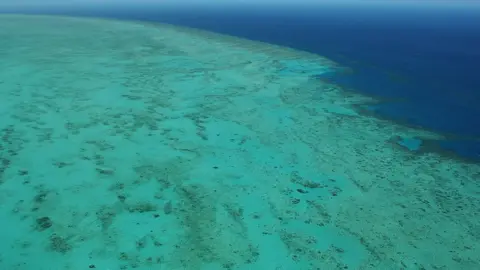Great Barrier Reef: Unesco opts against 'in danger' status
 Getty Images
Getty ImagesUnesco has decided not to place the Great Barrier Reef on its official list of World Heritage sites "in danger".
Unprecedented back-to-back coral bleaching events had intensified debate about whether Unesco should change the status of Australia's reef.
Listing a site as "in danger" can help address threats by, for example, unlocking access to funds or publicity.
Australia welcomed the decision as support for its conservation measures, but Unesco also made criticisms.
The ruling was made at a Unesco World Heritage Committee meeting in Poland.
Australian Environment Minister Josh Frydenberg described it as a "big win" for his nation.
"We are taking every action possible to ensure this great wonder of the world stays viable and healthy for future generations to come," he told an Australian Broadcasting Corp radio programme.
In its draft decision released earlier this week, Unesco said Australia had taken several significant steps to preserve the reef under its Reef 2050 Plan.
However, it criticised Australia's slow progress in improving water quality, noting some conservation targets were "not expected to be achieved within the foreseen timeframe".
The heritage body also called on Australia to better tackle the issue of land clearing.
Echoing studies by scientists, Unesco said climate change remained the reef's most significant threat.
It called on Australia to provide a comprehensive update on its protection efforts by December 2019.
Heritage classifications
Unesco has named 1,052 sites of environmental and cultural importance, such as the reef, on its World Heritage List,
It keeps a separate list of places in danger of losing heritage status, currently numbering 55.
In addition to potentially accessing World Heritage Committee-allocated funds, being on the danger list also alerts the international community, who might contribute funds themselves or technical expertise.
The reef - a vast collection of thousands of smaller coral reefs stretching from the northern tip of Queensland to the state's southern city of Bundaberg - was given World Heritage status in 1981.
